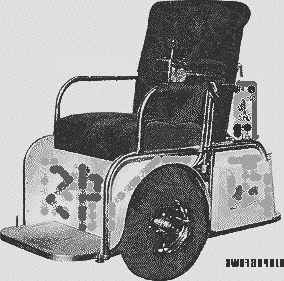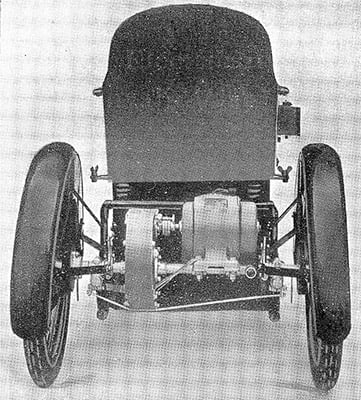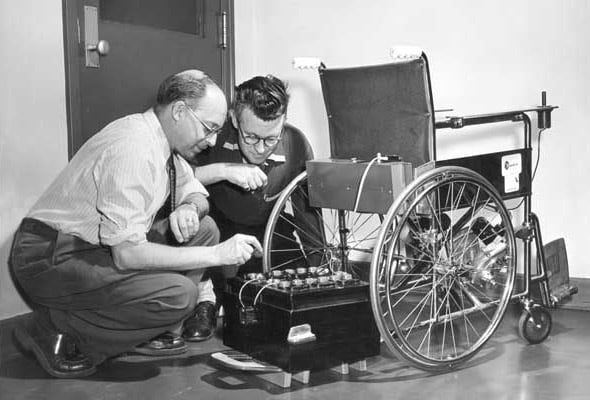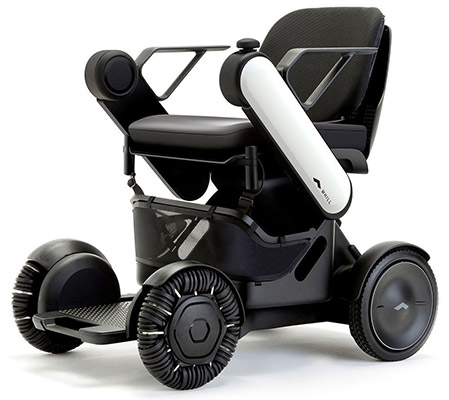The Irbit motor chair adds to the illustrious history of the power wheelchair and how it revolutionized how the disabled population moves independently.
While the Irbit is not considered the first power wheelchair, it enabled wounded Russian soldiers in WWII to make great contributions despite their disabilities.
This article shares the history of the power chair, which serves as the benchmark for today’s innovative mobility inventions.
What is the Irbit Power Chair?
The Irbit Motorchair was invented in Russia during WWII, created as an instrument against the German invasion.
This was the Russians’ solution to the German military’s swift BMW motorcycles with sidecars. They had thousands of them, and these motorcycles were highly reliable and maneuverable on the battlefield.
The sidecar was a deadly force, holding a soldier, supplies, and a machine gun that made it easy to overcome Russian ground troops stuck in one spot.

In 1939, engineers in Moscow purchased a handful of these BMW sidecars from Swedish intermediaries and got to work examining the design. They found that while it was an excellent motorcycle, the overall build was rather large, loud, and conspicuous.
The Russian engineers wanted to design a more efficient, maneuverable motorized vehicle that was small and quiet while still being able to carry a soldier and supplies.
That’s how the first motor chair was born. It was built in a Moscow factory and quickly became a high-demand vehicle throughout the Russian military.
But as Germany advanced quickly, military leaders began to worry that the Moscow factory was in jeopardy of being bombed. A decision was made to move the motor chair production out of bombing range in the Ural mountains of the far East.
A factory site was chosen in a tiny trading town called Irbit, just on the cusp of the Siberian Plains.
The town’s only building- a brewery- was transformed into full-fledged research, development, and manufacturing plant for what would soon become the home of the infamous Irbit Motorchair.
The Irbit featured a small gasoline engine, mechanical steering, and front-wheel drive. During WWII, over 5,000 Irbit Motorchairs would be produced in the Ural, becoming strategic tools to defeat the Germans on the ground.
But it’s not that these chairs were mass weapons of destruction. Instead, it changed the way that soldiers could participate in the war.
The Irbit Motorchair made it possible for injured soldiers to continue fighting instead of sitting in the infirmary. In fact, it became a common occurrence for amputees to jump into an Irbit a week after surgery and ride off into battle.
It must’ve been quite a sight for the Germans, seeing wounded Russian soldiers chasing them down with machine-gun clad motorized chairs!

And, the Irbit certainly made contributions to helping curb the Nazis’ invasion into Russia. Most importantly, though, it gave the disabled soldiers the power to move freely like never before.
This realization stuck firm long after the war. Although the Irbit was built exclusively for the military until the 1950s, the Russians did begin to pursue a new domesticated route with the motor chair.
A plant was built in Ukraine, and Irbit Motorchair Works (IMW) was established. The goal was to design motor chairs for the general public, which quickly gained favor with the disabled population.
The thing is, across the world, another type of motorized chair was evolving. By the 1960s, other refined, eclectic mobility products pushed IMW to shut down in 1968.
History of Power Wheelchair
The inventor credited with helping design the first power wheelchair was George Klein, a Canadian born in 1904.
Even today, his inventions inspire innovations in various industries, but his work on mobility products remains one of his most profound contributions.

Klein developed a fascination for mechanics at an early age as he shadowed his father working in his jewelry shop, tinkering with the inner components of watches.
That childlike curiosity grew into a passion. Although he wasn’t regarded as the “best” student in his young adult years, he would transform that passion into a career as an inventor, with technological masterpieces that are still used today.
Klein’s career as an inventor spans 40 years. He worked as an engineer and designer at the National Research Council of Canada, where he helped develop the electric wheelchair for quadriplegics.
His powerchair incorporated a joystick, separating wheel drives and turning elements. Not only did these details improve maneuverability, but made free movement more easily accessible for those with disabilities.
Power Wheelchair of the Future
Klein is one of Canada’s most revered inventors of the 20th century, but powerchairs have made enormous technological gains since then.

While powerchairs are constantly evolving, and modern chairs are already extremely adept, what does the future have in store for mobility?
New technology focuses on driverless wheelchairs, following in the footsteps of self-driving cars. In fact, two powerchairs with driverless capabilities made their debut in Tokyo’s Haneda Airport, featuring an attached cellphone that “drives” the chair, telling it where to go and when to turn.
Mapping software and special sensors are also on the technological menu for future wheelchairs, with enhanced ergonomic designs that make it easier to move around comfortably and safely.
We also might be seeing savvy features that include wireless headsets, double-seat chairs to hold two people, and LED lights that increase visibility in the dark!
Nonetheless, what matters is that powerchairs continue to improve, making it easier for users to accomplish their dreams.
Final Thoughts: Irbit Power Chair and the History of Power Wheelchairs
The Irbit powerchair has come a long way, with a vibrant history that exemplifies the magnificent benefits it offers for the disabled population and continues to challenge the current technology with creativity and innovation.
As the world evolves, so does powerchair technology, and it is exciting to see the types of advancements that are in the works for the future. But no one can forget the gallant Irbit. If you travel to Moscow, you might just see an old one still rolling down the road!
Resources & References:
- The Maker: George Klein and the First Electric Wheelchair, University of Toronto Engineering News.
- Start-ups Seek to Breathe New Life Into Stagnant Wheelchair Industry, Washington Post.